
Pollinator on a daisy © Vaughn Matthews
Planting for Pollinators
We need to act now for pollinators
In the last fifty years, evidence suggests that the abundance of insects has fallen by 50% or more. And, even more shockingly, one third of the remaining insect species, worldwide, are threatened with extinction1
The primary cause of the decline in wild bees and other pollinating insects is the loss of flower rich habitat.Department for Environment Food & Rural Affairs
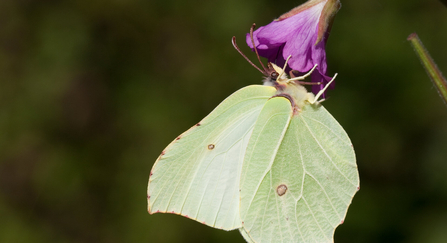
Brimstone butterfly © Vaughn Matthews
In the UK, Defra has identified the primary cause of the decline in wild bees and other pollinating insects as the loss of flower rich habitat2.
Indeed, since the 1940’s, we've lost 97% of UK flower rich meadows, 50% of our hedgerows, and 60% of flowering plants are in decline. Available data suggests that these declines are mirrored in Cumbria.
The good news is that it's not too late; few insects have gone extinct so far, populations can rapidly recover3, and by re-instating flower-rich habitats within the landscape, we'll help restore pollinator diversity and abundance. But, we need to act now.
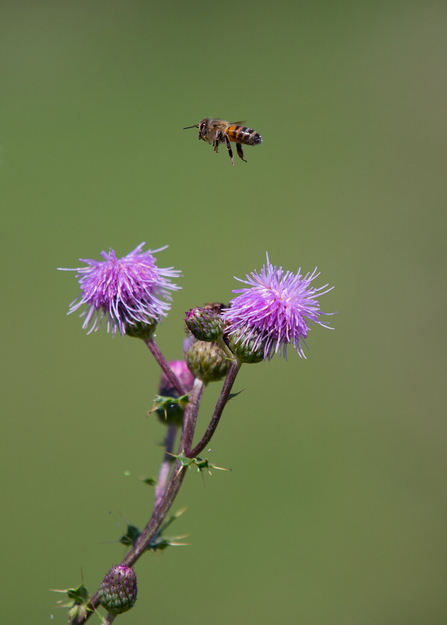
© Jon Hawkins - Surrey Hills Photography
Cumbria's Plan Bee: Engaging Cumbria to help our pollinators
A new Plan Bee strategy to help Cumbria’s vitally important native pollinators was developed under the ‘Planting for Pollinators Project’.
Planting for Pollinators project was a Cumbria Local Nature Partnership initiative delivered by Cumbria Wildlife Trust, Cumberland Council and Westmorland and Furness Council, Cumbria Biodiversity Data Centre and local communities.
Our completed and on-going projects for pollinators
Planting for Pollinators project, funded by Cumberland and Westmorland and Furness Councils from Summer 2023 - present
Thanks to new funding through the Environment Fund from Westmorland and Furness Council, and Cumberland Council, we are carrying out pollinator friendly works in Barrow, South Lakeland and Copeland areas of Cumbria. This work for pollinators started in summer 2023.
Our aim is to create or restore approximately 9 hectares of habitat at 25 different sites by 2024.

Planting for Pollinators project, funded by the Green Recovery Challenge Fund from September 2021 to March 2023
Planting for Pollinators was a project developed by Cumbria Local Nature Partnership and delivered by Cumbria Wildlife Trust and Cumbria County Council from September 2021 to March 2023 and following an extension, an additional three months.
Together with Cumberland Council and Westmorland and Furness Council, we worked to reverse pollinator decline across north & west Cumbria.
We created, improve and connect a mosaic of pollinator-friendly habitats, in turn providing food, shelter and nesting places for the likes of bees, butterflies, wasps and other insects. Pollinator-friendly habitats include hedges, species rich grassland, scrub, deadwood, banks, glades and flower rich gardens.
The Planting for Pollinators project covered over fifty sites:
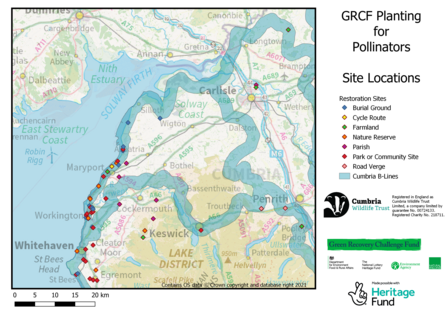
The sites were varied and included roadside verges, farmland, community green spaces, orchards, church grounds, and public & private gardens.
We carried out surveys on each site in liaison with a variety of landowners and land managers, offering our advice on how to restore and manage habitats for the benefit of pollinators.
The Planting for Pollinators project focused on addressing both habitat loss and fragmentation. We:
- Restored and created 158 hectares of wildflower rich habitat.
- Grew local provenance wildflowers as part of the National Seedbank Network in order to collect, store and use seed for both this project and future restoration projects.
- Gave people ways they can take action themselves – through volunteering, pollinator identification & recording training, as well as planting activities within communities, green spaces and gardens.
- Provided training and volunteering opportunities to enable people to learn more about how they can help pollinators.
- Developed a pollinator strategy for Cumbria: The partnership can use the fifty sites in this project as examples of best practice for enhancing habitats for pollinators, whether it be a churchyard, a parish, a farm or a cycleway. We're particularly keen to use the development of a pollinator strategy to influence management carried out under future agri-environment agreements.

Thank you to our funders of the Planting for Pollinators project
The funding for the Planting for Pollinators project came from the Green Recovery Challenge. It helped us build on the work of the Get Cumbria Buzzing! project, increasing and connecting the range of habitat on the ground for pollinators along the B-Lines across north & west Cumbria.
1 ‘Insect declines and why they matter’. Professor David Goulson, FULL AFI REPORT WEB1_1.pdf (wildlifetrusts.org)
2.’Status and value of pollinators and pollination services’ A report to the Department for Environment, Food, and Rural Affairs (Defra) July 2014 ver. 3 Authors: Dr Adam J. Vanbergen , Dr Matt S. Heard , Dr Tom Breeze , Prof. Simon G. Potts and Prof. Nick Hanley.
3 ‘Insect declines and why they matter’. Professor David Goulson, FULL AFI REPORT WEB1_1.pdf (wildlifetrusts.org)
Read a Planting for Pollinators blog
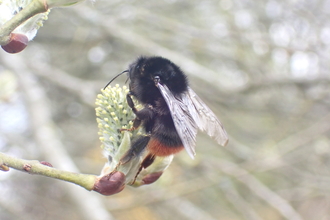
Looking out for spring's pollinators
With daylight lasting longer each day, spring is well underway across Cumbria. This means that many of our early pollinators have…
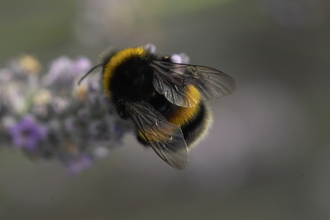
Planting for Pollinators gets underway
The Planting for Pollinators project gets underway

A fly in disguise - meet the dark-edged bee-fly
Out in spring, dark-edged bee-flies are one of the first pollinators you’ll encounter in the year. A furry fly with a high-pitched buzz…
